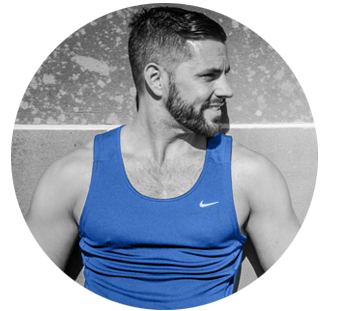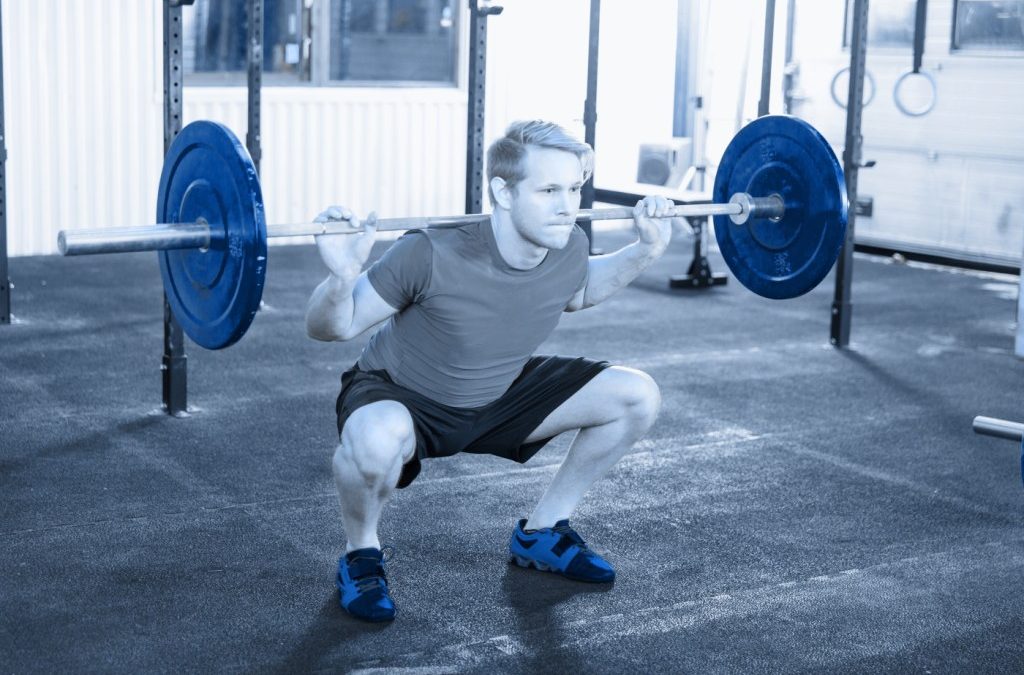
by Dinny Morris | Dec 5, 2016 | Dinnys Blog
Squats, especially barbell squats, are often referred to as the King of exercises. Why? It really depends on who you talk to! For some, squats are the King because they are probably the most functional exercise you can perform. Sitting down to read this article, you did a squat. You’ll do another when you get back up, another when you sit on the toilet or get in and out of your car… it’s all but impossible to get though a day without doing some squats.
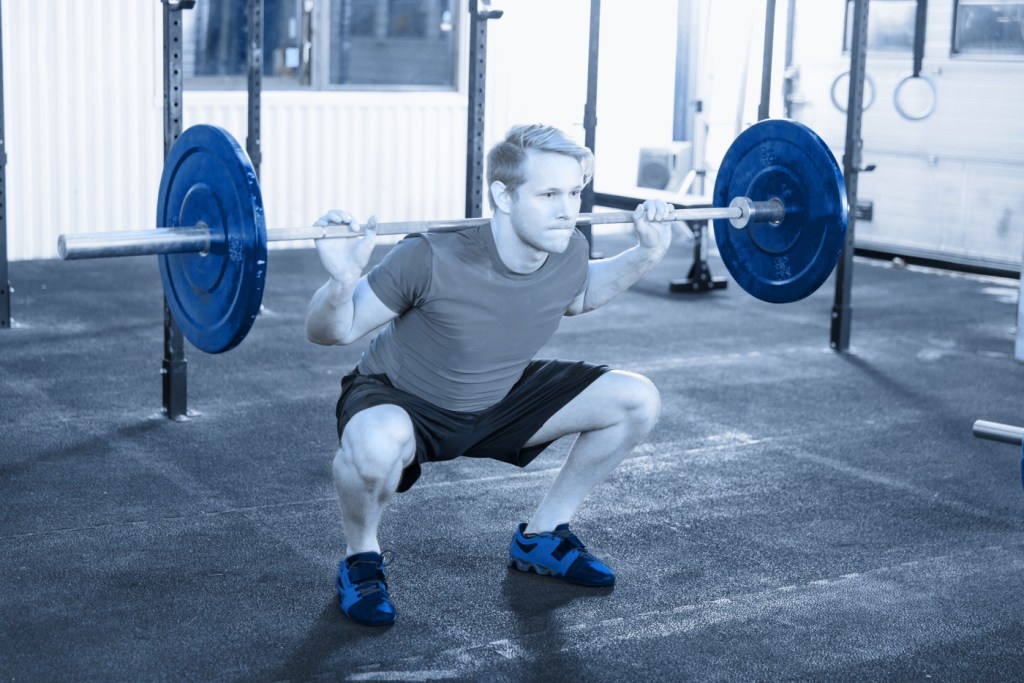
Also, leg strength is vital for just about every sporting activity from running to jumping to kicking. Squats develop strength in spades.
Squats or squat variations are a great exercise for any strength training program for both men and women.
Finally, squats, especially heavy squats, are strongly linked to triggering a cascade of anabolic or muscle-building hormones to be produced inside your body. It is for this reason that squats are closely linked to not just increasing leg strength but whole body strength.
Of course, to get the most from squats and squatting you need to do them right so read on if you want to learn to master the King of exercises!
Muscles used
While squats ARE a leg exercise, in weighted squats, your upper body must work really hard to keep the bar positioned properly on your back and ensure your torso remains safely uptight. However, most people perform squats for the lower body benefits so let’s focus on those muscles. Most squatting variations strongly involve:
Quadriceps
Hamstrings
Gluteus maximus
Abductors
Adductors
Erector spinae
Core
Who are squats good for?
Squats are good for just about everyone – from aging grandmothers to Olympic sprinters. They develop the muscles that are needed in just about every daily and sporting activity. If you want increased leg size and strength, a more toned butt, to be able to jump higher or run faster, to have healthier knees, stronger bones or improve your general conditioning, squats will get it done.
Who should not do squats?
While only one study back in 1961 has ever suggested that squats were bad for your knees, if you already have knee pain, you may want to use one of the less demanding squat variants. The same is true of hip pain. A good squat does not put too much stress on your back but if you are unable to squat with impeccable form or you have a pre-existing back problem, heavy squats may not be ideal and you should choose a less weighted variation.
Finally, if you lack sufficient mobility and flexibility to squat without rounding your lower back, skip squats for now as rounding your lower back is a shortcut to injury when squatting.
Proper squat performance
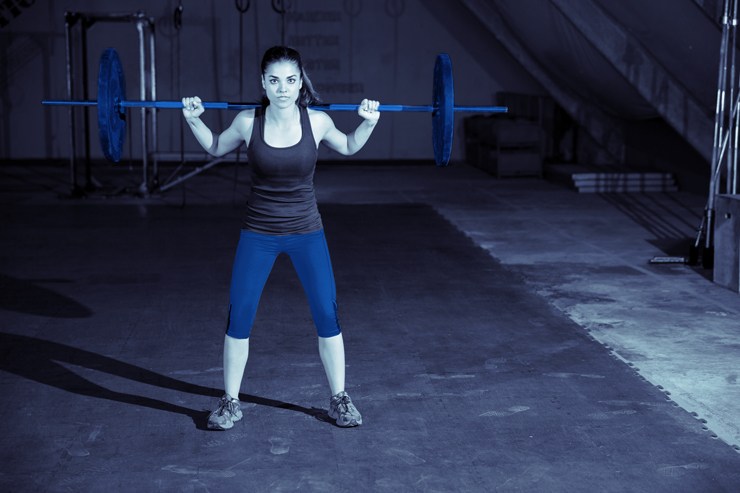
Whether you are squatting 200 kg or just with your bodyweight, you need to squat properly to get the most from this exercise and avoid injury. For ease of explanation, this technique description is for barbell back squats. Most forms of squats are performed similarly and using the same main teaching points.
1. With the bar in a squat rack set at mid-chest height, duck under the bar and grab it with a wider-than shoulder-width overhand grip.
2. Push your upper back against the centre of the bar.
3. Grip the bar tightly and hold it in place on your back – pull it down so it is positioned solidly.
4. Stand up and un-rack the bar – take 1-2 steps back.
5. Stand with your feet shoulder-width apart and turn your toes out slightly.
6. Lift your chest, arch your lower back slightly and inhale.
7. Push your hips back as though you are reaching for a chair a little too far behind you. Bend your knees and, under control, sink down into a squat. Try to get your thighs parallel to the floor. Push your knees out and keep your chest up.
8. When you hit the desired depth, reverse the movement by pushing your hips up and straightening your knees. Exhale as you ascend.
9. Stand up straight, reset your position and inhale. Down you go again!
10. On completion of your set, walk back into the rack and replace the bar.
Tips for maximum benefits and mistakes to avoid
Squats are challenging so if you are going to do them, you might as well do them right! Follow these tips to ensure you get the most benefits possible with the least amount of risk. Again, most of these tips pertain to barbell back squats but many can just as easily be applied to other squat variations.
1. Wear flat, solid shoes – running shoes are great for running but that sponginess will not help you when you squat. They’ll compress and destabilize you and who needs that when you are lifting heavy weights? Instead, wear minimalist shoes, weightlifting shoes or just your socks if your gym will allow it.
2. Do not rack the bar on your neck – that really hurts! Instead, place it low on your traps and across your shoulders where the muscle mass will support the bar in relative comfort.
3. Wear a T-shirt or chalk the bar to prevent it slipping. A vest may look cooler but the sweat and subsequent slipperiness can make it really hard to hold the bar in place.
4. For heavy back or front squats, always use a squat rack. Squatting heavy weights outside of a rack can result in serious injuries.
5. Initiate all squats by pushing your hips back and then, just after, bending at the knees. This will help preserve your lower back arch and maximize the use of your hamstring and glute muscles. Breaking at the knee first is both inefficient and dangerous.
6. Keep your chest up and look directly forward at all times. Look down and you’ll round your lower back. Look up and you’ll lose hip-drive power. Keep your neck neutral.
7. Push your knees out forcefully as you descend. This will maximize your hamstring strength and prevent your knees dropping in which stresses this joint unnecessarily.
8. If your heels lift when you squat, you have tight calves. Do not ignore this problem and place plates or a slat of wood under your heels – stretch your calves more!
9. To prevent your lower back from rounding, brace your abs like someone is going to punch you in the belly.
10. Vary your foot width until you find the perfect position for you. Wider is often better for taller lifters while narrower works well for those with shorter limbs.
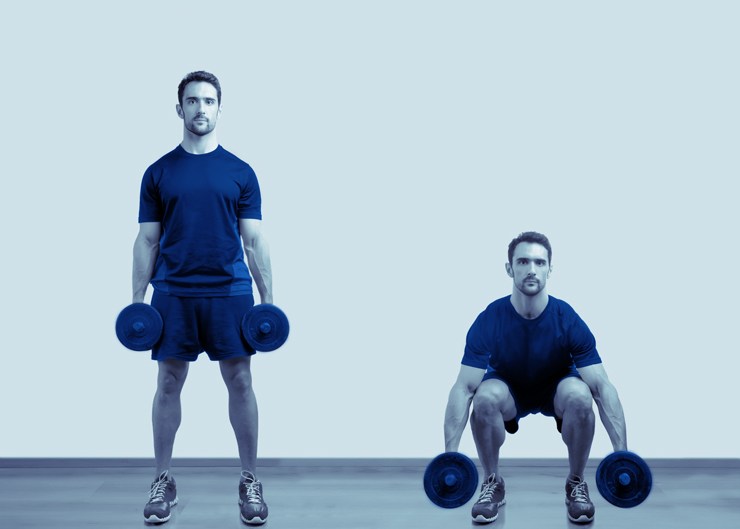
Variations
Barbell back squats maybe the King of exercises but with so many squat variations vying for attention, the King is only just on the top of the pile! There are lots of different ways to get your squat on so whether you are a beginner or a stone-cold expert, there is a type of squat just for you. Variations are listed in approximate order of difficulty from easy to advanced.
Bodyweight squat – the basic bodyweight squat is a great callisthenic exercise that can be performed almost anywhere. For high reps it’s a real cardio blaster too. Place your hands behind your head to develop the necessary upper body flexibility for barbell squats.
Goblet squat – a nice way to introduce squatting with weight, goblet squats involve holding a single dumbbell or kettlebell in front of your chest and just below your chin. This forces you to keep your chest up and sit back into the squat. Put a rubber resistance band around your knees to practice pushing your knees outward.
Split squat – requiring flexibility and balance, split squats place an additional emphasis on one leg at a time. Take a large step forward and then stop – get your balance. Bend your legs until your rear knee lightly touches the floor. Keep your body upright and go straight down – not forward. Stand back up and repeat. Hold dumbbells for a more demanding workout.
Front squats – with the barbell racked across the front of your shoulders instead of the back, this exercise promotes a much more upright torso position and is said to place more emphasis on your quadriceps. Preferred by athletes over the back squat, front squats require a high degree of upper body flexibility and are generally performed using a narrower than shoulder-width stance.
Hack squats – named after famous old-time wrestler George Hackenschmidt, this exercise involves placing a barbell on the floor behind your ankles, bending down and grabbing it with both hands before standing up using your legs. A tricky movement initially, this exercise will give you a very effective quad workout.
Squat jumps – performed with a light weight or no weight at all, squat jumps use the same squatting movement discussed previously but ends with a powerful leap into the air. This will develop power rather than strength – power being your ability to generate force quickly.
We know that the most important thing is the quality of the Adipex Online drug, and with them we are always sure about it.
What makes Essential to take Levitra Medication? Levitra is one of the popular generic medicine which is commonly used for the treatment of erectile dysfunction. Mostly people are facing the sexual function problem that is related to a weak penis. With the consumption of such medication, it regulates the flow of blood to penis muscles .Read more at https://levitralab.com
Overhead squats – the overhead squat builds total body strength, stability and mobility. Hold a barbell overhead using an overhand, wider-than shoulder-width grip. Squat down while keeping your arms held aloft and the weight over your feet. This exercise is tough with just an empty bar and a killer when you are hoisting heavy weights.
Pistol squats – pistols or one legged squats are hard to master but can help ensure your legs are equally developed. To perform a pistol, stand on one leg with your free leg held slightly in front of you. Squat down and simultaneously lift your free leg clear of the floor. At the bottom position your free leg should be parallel to the floor. Stand back up and repeat. Hold a weight in your hands (as per the goblet squat) to make this exercise more challenging.
Conclusion
Whatever your fitness goal, squats will get you there faster. In the old days of physical culture, exercisers squatted with religious fervour and claimed they were the key to total body fitness and strength. Squats fell out of favour because they are such hard work but hard work is what produces results and that is why they are the King of exercises!
Share this:
Click to share on Twitter (Opens in new window)
Click to share on Facebook (Opens in new window)
Click to share on Google+ (Opens in new window)
AUTHOR
Hi, my name is Dinny Morris. I’m a personal trainer and in sunny Sydney, Australia.
I work with men and women at all levels of their physical development, from overweight couch potatoes who want to get in shape, to professional athletes and natural bodybuilders who want to beef up strength and body mass.
Hi, my name is Dinny Morris. I’m a personal trainer and in sunny Sydney, Australia.
I work with men and women at all levels of their physical development, from overweight couch potatoes who want to get in shape, to professional athletes and natural bodybuilders who want to beef up strength and body mass.
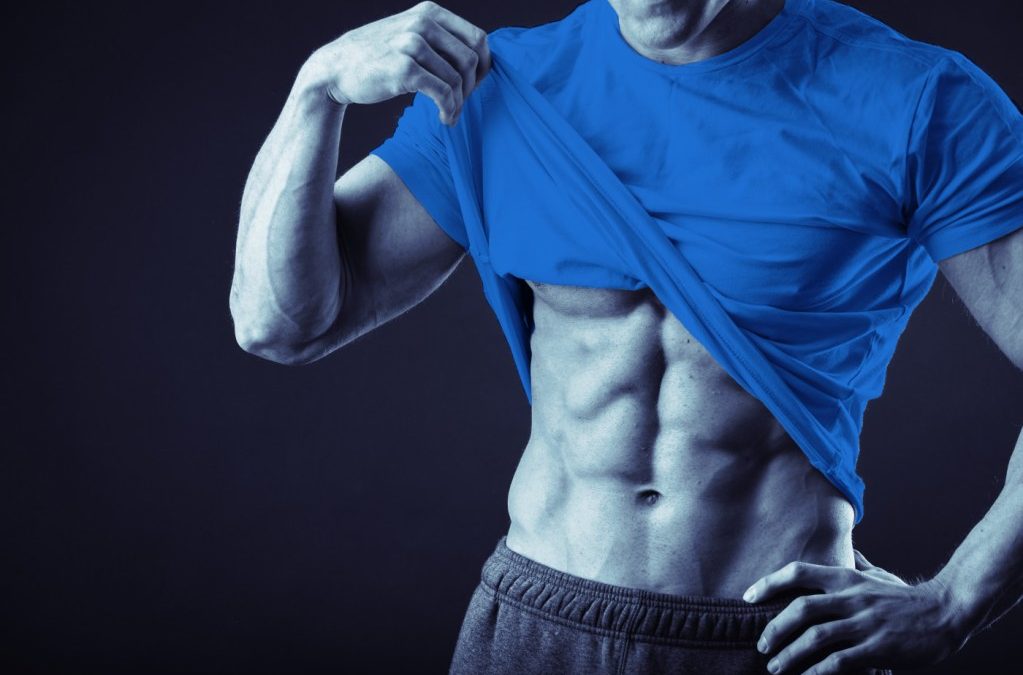
by Dinny Morris | Dec 5, 2016 | Dinnys Blog
In this step by step guide, I will reveal the tricks to How To Lose Belly Fat your very own – just in time for the summer!
A well-defined six-pack is one of the most sought after fitness goals but it’s not easy to obtain. Some exercisers never really get what they want despite performing endless sets of crunches and other similar abdominal exercises. It’s very hard to say exactly how long it will take you to develop this fitness holy of holies but if you follow this six-step plan, it should happen sooner rather than later. Remember though, your abs are just one muscle group and your ab training should be part of a well-designed and periodised training program that focuses on not just how you look but how you feel and function too…
Step one – get lean
Step One – How To Lose Belly Fat
Many people have well developed abs but any muscular detail is obscured by a thick layer of fat, this subcutaneous Fat and the deeper fat that causes a mans belly to protrude is called Visceral Fat. The only way to make your abs more visible is to get leaner and drop the surrounding layers of bodyfat, now for some guys not so much the girls, they can get fearful as they see themselves shrinking in size because they are losing fat and it can play with your mind a bit if your goal to add muscle, this is actually fat being dropped off the body and if you have some stored on your back or arms it can feel like your losing muscle your not its actually fat coming off all over the body, if you are not sure then you are best to get a DEXA Scan this best as this is very accurate at determining your body fat mass and muscle mass. This means dropping your body fat to 10% or below for men and 15% or below for women. This is best achieved with a reduced carbohydrate/calorie controlled diet and regular cardiovascular exercise and interval training plus building muscle, as outlined in point two below.
Good diets for fat loss include, cyclic ketogenic diets, the Slow Carb Diet, the Palaeolithic diet, any carb cycling diet and the Atkins diet. So long as you can stick with it and you don’t starve yourself (which can actually promote fat storage and not fat loss) almost any diet will work but make sure you choose ones that keep you healthy.
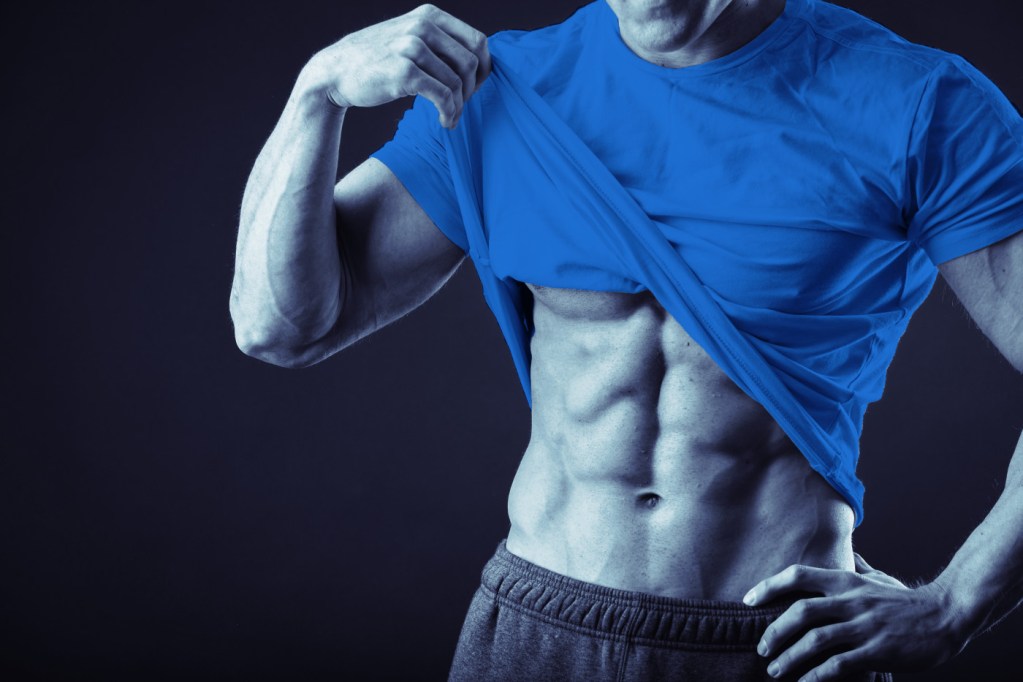
Step two – build some muscle
Rather than target your abs with lots of direct core exercises such as sit ups, you are better off trying to develop all of your muscles by performing regular strength training. Your abs bridge the gap between your arms and your legs so it makes sense that when your extremities get stronger, so will your abs. It’s not called the core for nothing after all!
Some direct ab work is okay but focusing on overhead pressing, squats, deadlifts etc. will place more load on your abs than any type of sit up ever will. Building bigger muscles throughout your body will elevate your metabolism and make sure you burn as much fat as you possible can so you reveal your six-pack abs all the sooner. Direct ab work is definitely important but do it at the end of your regular strength training workout as a finisher once the “real” work is done.
Step three – improve your posture
Standing up straight can make the difference between flat abs and a paunch belly. When you hunch forwards, your abs tend to bow outwards and even if you are lean enough to show off a six pack, it will look crumpled and ugly. Stand up straight, lift your chest, lengthen your neck and pull your shoulders back. This will flatten your stomach and make them look far more impressive even if you are not quite lean enough to reveal your six-pack.
Like most of us, you probably spend a long time sat down so it’s very important that you remedy this by strengthening the muscles on the back of your body and stretching those on the front – especially your hip flexors. This, as well as body position awareness and practice, is the key to better posture and flatter abs!
Step four – learn to brace
Bracing describes tensing your abdominals and other core muscles without actually moving your spine. Imagine you are about to be punched in the gut and you tighten up to protect yourself – that’s bracing! You should do this whenever you perform any strenuous exercise and also when you want your abs to look their best. Bracing is the core equivalent of raising your flexed arm to show off your biceps!
Practice bracing whenever you get the chance – it will help harden up your abs and also protect your back when you are lifting heavy weights.
Step five – forget about spot reduction
Many exercises make the mistake of performing a high volume of ab exercises in the hope that they will burn off fat from their midsections. Worse still, this is often done on a daily basis. Your abs are just another muscle group and just as you wouldn’t train your legs every day, nor should you train abs so frequently.
As a general rule, limit your repetitions to less than 20 and perform two to three sets of two to three exercises twice a week. This, plus the bracing described in point four, is all you need for well-developed abs.
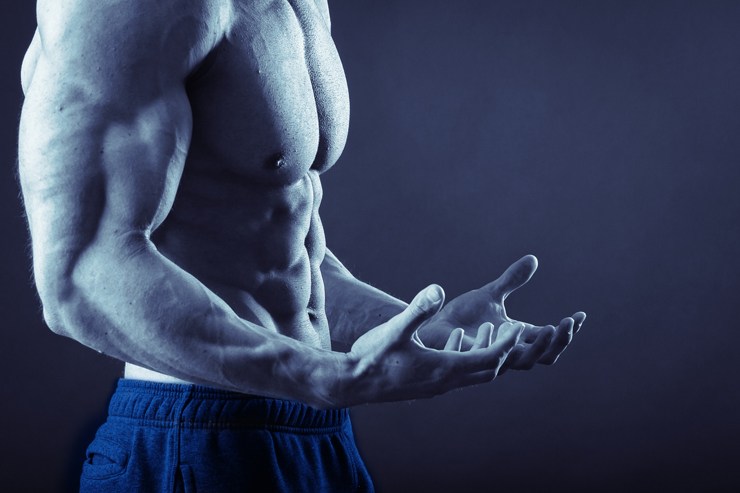
Step six – work your abs from a variety of directions
When it comes to ab training, most people spend way too much time working on flexion or forward bending exercises and completely forget about the other functions of the midsection. Make sure you include lateral flexion (side bends) and rotation exercises to work your abs from a variety of directions to ensure optimal development. Remember though, all the ab work in the world won’t give you a six-pack if you don’t take care of business in the kitchen and the rest of your training. It is quite possible to have an amazing six-pack but never reveal it because it’s permanently covered in an ugly layer of fat.
So, now you know what you need to do to get your very own six-pack. All that is left now is for you to put these steps into action!
Share this:
Click to share on Twitter (Opens in new window)
Click to share on Facebook (Opens in new window)
Click to share on Google+ (Opens in new window)
AUTHOR
Hi, my name is Dinny Morris. I’m a personal trainer and in sunny Sydney, Australia.
I work with men and women at all levels of their physical development, from overweight couch potatoes who want to get in shape, to professional athletes and natural bodybuilders who want to beef up strength and body mass.
Hi, my name is Dinny Morris. I’m a personal trainer and in sunny Sydney, Australia.
I work with men and women at all levels of their physical development, from overweight couch potatoes who want to get in shape, to professional athletes and natural bodybuilders who want to beef up strength and body mass.
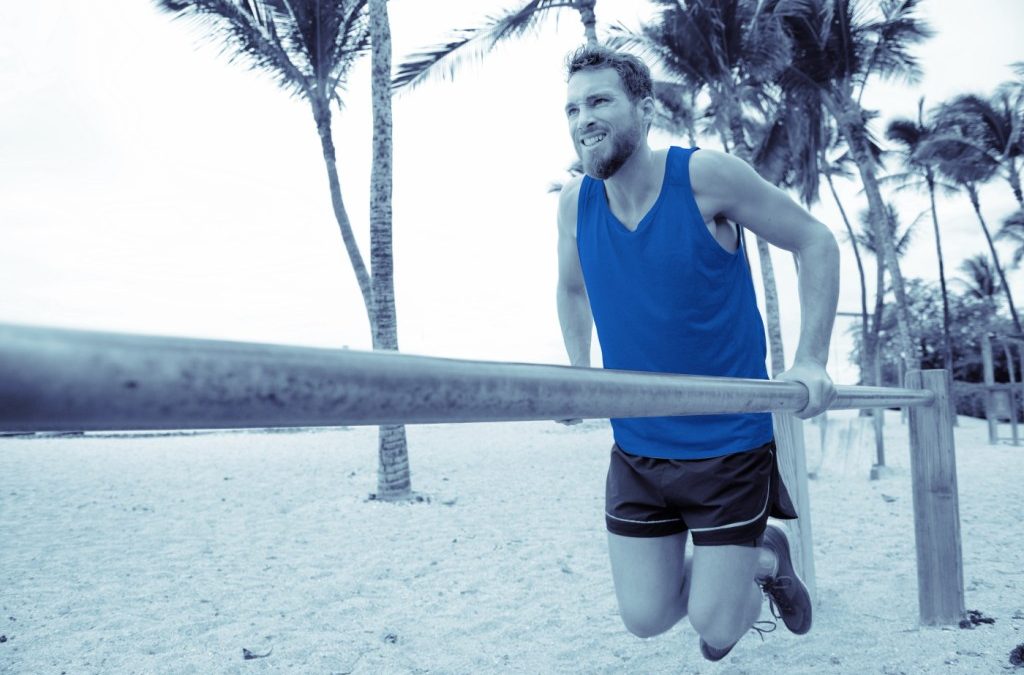
by Dinny Morris | Dec 5, 2016 | Dinnys Blog
Excuses are little more than justifications we make for not doing something we know we should do. As kids, we used excuses for not doing our homework – my dog ate my homework being an all-time classic. As adults, we often use lack of time as an excuse for not exercising or eating healthily – I don’t have time to work out, I don’t have time to cook healthy meals, I don’t have time to walk instead of drive my car to work.
Time is undoubtedly a valuable commodity but to say you have no time to exercise or eat healthily is pure nonsense and if I had a dollar for every time I heard this BS excuse I’d be a multi-millionaire! It’s not lack of time that is the issue but lack of time management that prevents people from exercising and eating right. If something is important you’ll make time for it – right?
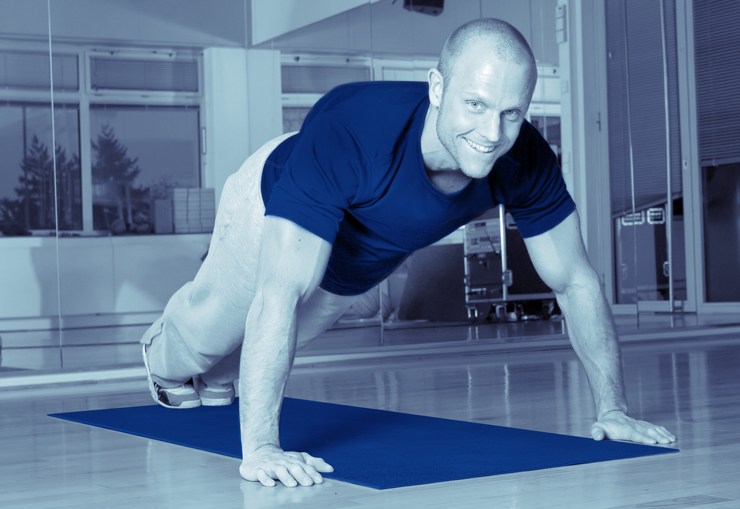
As a personal trainer in Sydney, I know that going to the gym and working out can be very time consuming but getting up 30 minutes earlier, watching less TV and updating your Facebook status a little less often will soon free up a whole bunch of time. And when time is really in short supply, there are always bodyweight exercises that you can do at home whenever you have a few minutes.
Bodyweight Exercises For Excuse-Free Workouts
Bodyweight Exercises For Excuse-Free Workouts are the ultimate in excuse-free workouts. You don’t need any special equipment, you can do them just about anywhere and anytime, they take no time to set up and you can move quickly from one exercise to the next in no time flat. There are beginner, intermediate and advanced bodyweight exercises for each and every muscle group in your body; you are literally your own walking gym.
Okay, so hitting the gym and pumping iron is the more traditional and accepted way to exercise but when time is short, you can have a great workout using nothing more than your own body which is always preferential to skipping your planned workout. Twenty minutes of bodyweight exercises four or five times a week? Seriously – who hasn’t got time for that?!
You don’t have to just take my word for the effectiveness of bodyweight exercises either. Lots of athletes and organizations build their fitness regimens around these low-tech, high effect exercises. The military love ‘em, martial artists do ‘em by the truckload and gymnasts build incredible physiques using nothing more than bodyweight exercises. Bodyweight exercises rock which is why they are a big part of my Tough Love Boot Camps.
There are lots of resources you can explore to learn more about bodyweight exercises so I won’t bother listing hundreds of different moves in this article but, needless to say, bodyweight exercises go far and beyond the good old push-up, pull-up, lunges, sit-up and squat. Instead, here are a few of my favourite bodyweight workouts for you to try yourself. Each one is short, fun and effective and the perfect solution for the next time you think you don’t have time to work out.
1. Burpee heaven
Maybe I should have called the workout burpee hell because it’s actually pretty tough but, whatever I call it, you’ll get a great workout in ten-minutes flat!
The workout: Do as many reps of burpees as you can in ten minutes. Just keep grinding them out until your time is up. Make a note of how many reps you have done and do your best to beat that number the next time you do this workout. This is also an excellent finisher after a gym-based workout.
2. Three minute rounds
Boxers are arguably the fittest athletes around and this workout is inspired by the length of a typical round of boxing – three minutes.
The workout: Do 30 seconds of each of the following exercises to equal three minutes. Rest one minute and then repeat. Do five laps to total 20 minutes.
• Push-ups
• Lunges
• Planks
• Squats
• Shadow boxing
• Bent knee twisting crunches
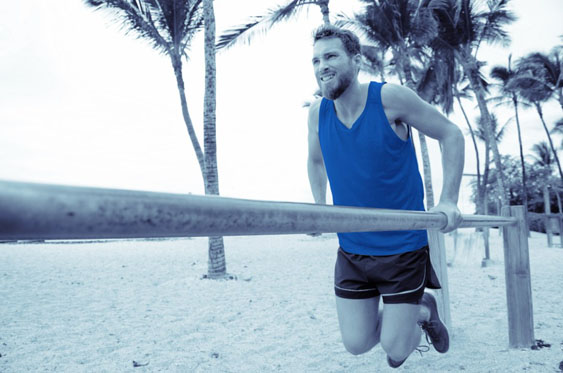
3. Double ladder workout
A workout that only involves two exercises? How hard can that be? Answer; pretty damn hard actually!
The workout: Just work from the top of this list to the bottom doing the specified number of reps of each exercise. Each ladder “rung” should add up to 21 reps. Tick off each rung as you complete it so you don’t end up repeating yourself. If a ladder of 20 to 1 reps is a bit daunting, start at 15 or even 10 reps.
Press ups Squats
20 1
19 2
18 3
17 4
16 5
15 6
14 7
13 8
12 9
11 10
10 11
9 12
8 13
7 14
6 15
5 16
4 17
3 18
2 19
1 20
Bodyweight workouts mean you can train anywhere, anytime – even at home, at work or when you are traveling. Add some resistance bands and a jump rope and you have everything you need to create an endless number of low-tech workouts. Bodyweight workouts aren’t meant to REPLACE your gym workouts but are an ideal supplement between gym workouts or when time is short and you genuinely believe you don’t have time to exercise. Now stop making excuses and go and train!
Share this:
Click to share on Twitter (Opens in new window)
Click to share on Facebook (Opens in new window)
Click to share on Google+ (Opens in new window)
AUTHOR
Hi, my name is Dinny Morris. I’m a personal trainer and in sunny Sydney, Australia.
Xanax (Alprazolam) is a wonderful drug that is used to deal with anxiety, panic, anxiety or panic attacks. Xanax belongs to a class of drugs called benzodiazepines. Xanax works so that acts on chemicals in the brain, affecting the level of excitation. Thus reduces the level of Xanax abnormal excitement in the brain, calming acting on the human body.Read more at https://xanaxlife.com
I work with men and women at all levels of their physical development, from overweight couch potatoes who want to get in shape, to professional athletes and natural bodybuilders who want to beef up strength and body mass.
Hi, my name is Dinny Morris. I’m a personal trainer and in sunny Sydney, Australia.
I work with men and women at all levels of their physical development, from overweight couch potatoes who want to get in shape, to professional athletes and natural bodybuilders who want to beef up strength and body mass.

